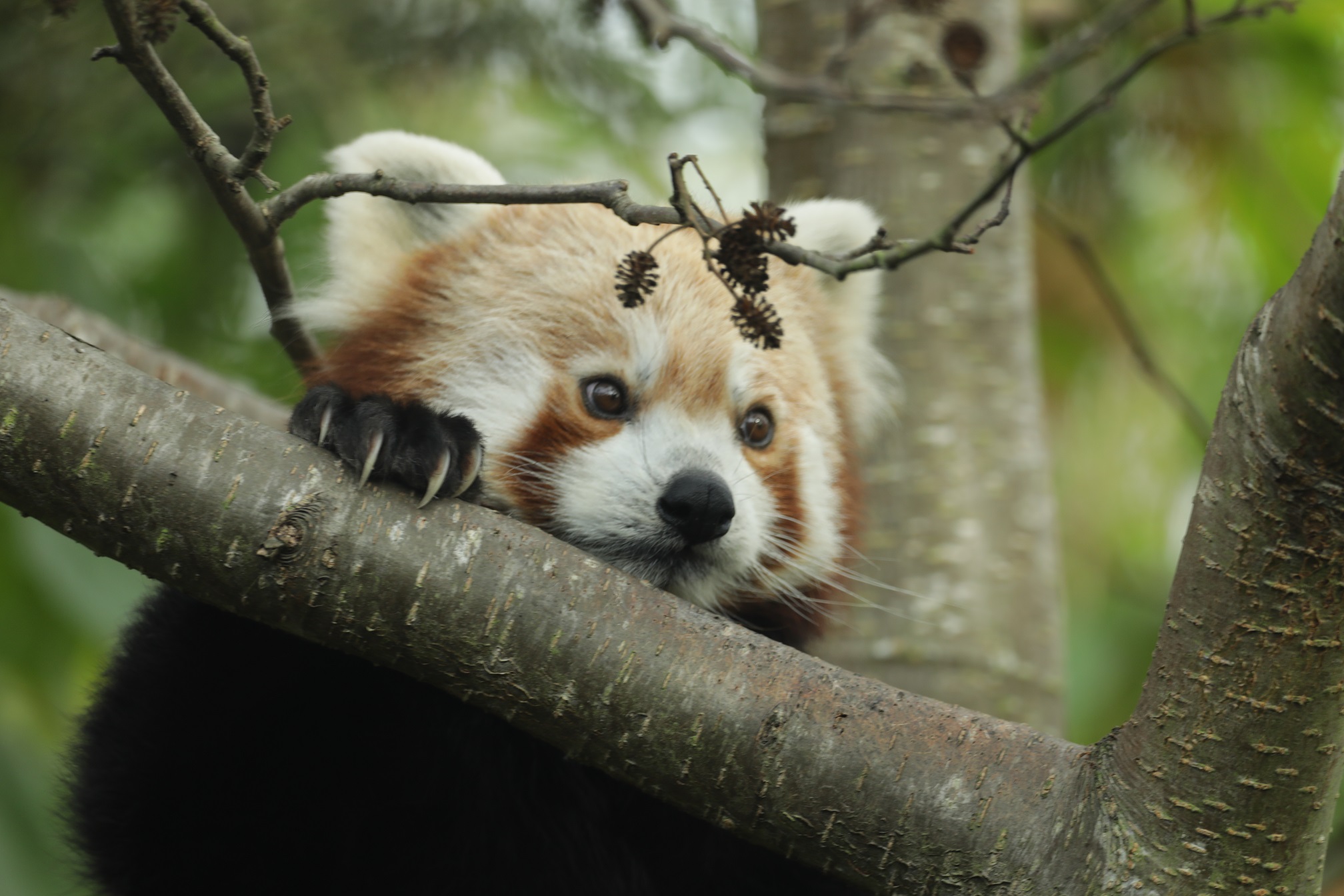Up to our armpits in mud for pond mud snail conservation
Posted 17 Jul 2025
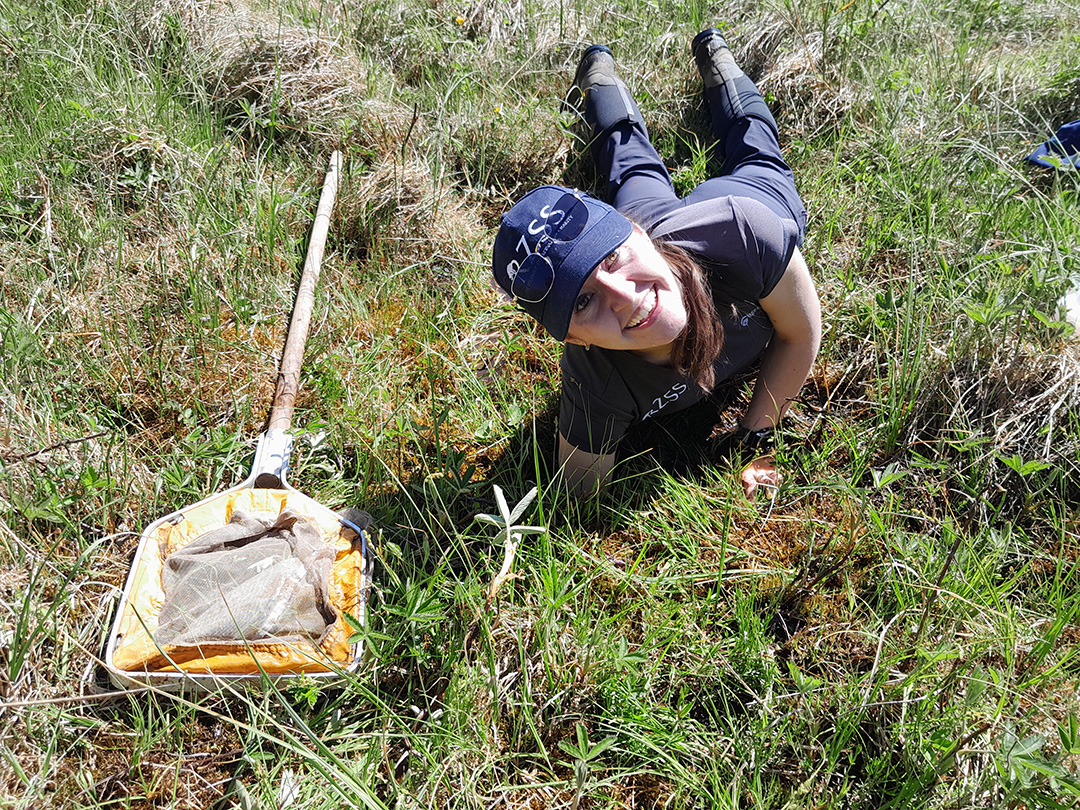
It’s been a snail-heavy time for our field conservation team, who have been busy surveying for the rare pond mud snail in the Pentland Hills near Edinburgh. While monitoring known sites continues as usual, we’ve also begun examining some new ponds in preparation for an upcoming reintroduction release of the species from our breeding population at Highland Wildlife Park.
This release will be the first its kind in Scotland since 2018 and a key milestone for our conservation project to restore populations of this tiny freshwater snail.

Pictured above: Laura up to her armpit (or oxter) gathering a sample of mud. CREDIT: Clive Walton
One sunny day, I set out with our team lead, Dr Helen Taylor (RZSS), and our long-time collaborator, freshwater snail supremo Clive Walton (RSPB Ecology), to survey potential release ponds for the pond mud snails we’ve been breeding at Highland Wildlife Park. We began near Harlaw Reservoir, crossing paths and fields in search of the perfect pond.
Things looked promising on arrival at the first potential site. The pond was holding water, despite recent hot and dry weather. We set to work collecting water samples for chemistry testing, taking measurements including temperature and water level, and recording the plant species we identified around the edge of the water.
Overall, we agreed this pond could be a good candidate – a great start to the day!
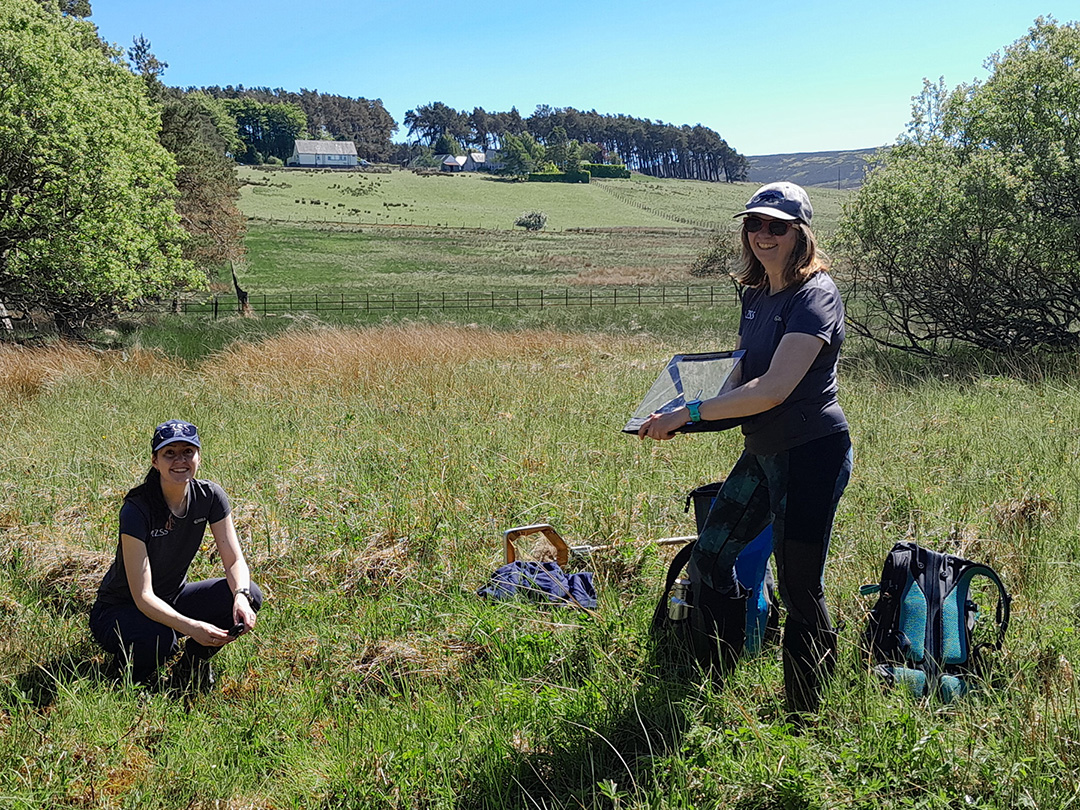
Pictured above: Laura and Helen during the survey. CREDIT: Clive Walton
Next, we headed to a spot near Threipmuir reservoir, where several ponds in Bavelaw Marsh had been suggested as a potential home for the snails. We took scoops of mud and searched them to discover what invertebrates and other species are present, and check pond mud snails aren’t already there. It’s messy but important work.
Small ponds and ditches such as these may not look like much, and they sometimes dry up completely, but it’s incredible what we find on our surveys. There are always lots of different invertebrates, from teeny pea mussels to shrimps and diving beetles. We also regularly see frogs, newts and small fish.
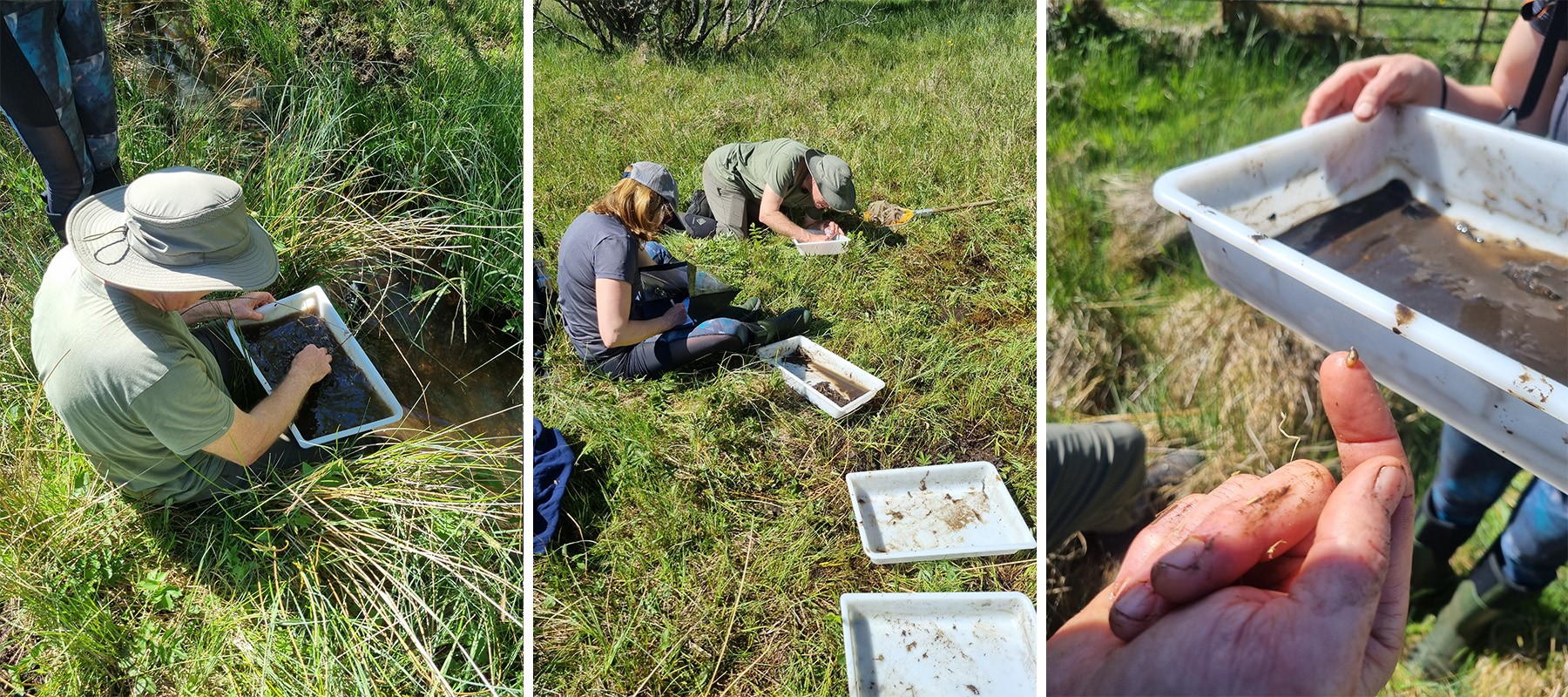
Pictured above: Clive and Helen searching through the mud scoops in their trays and (far right), finding our first snail, a Succineidae probably Oxyloma elegans, a species of amber snail. CREDIT: Laura Daniels
Excitingly, Clive hit the jackpot by finding three rarely seen species, including the marsh whorl snail and herald snail - both never recorded at Bavelaw! He has reported his excellent finds to the national recording scheme, contributing valuable data to our understanding of these species and highlighting just how important Bavelaw is for wildlife.
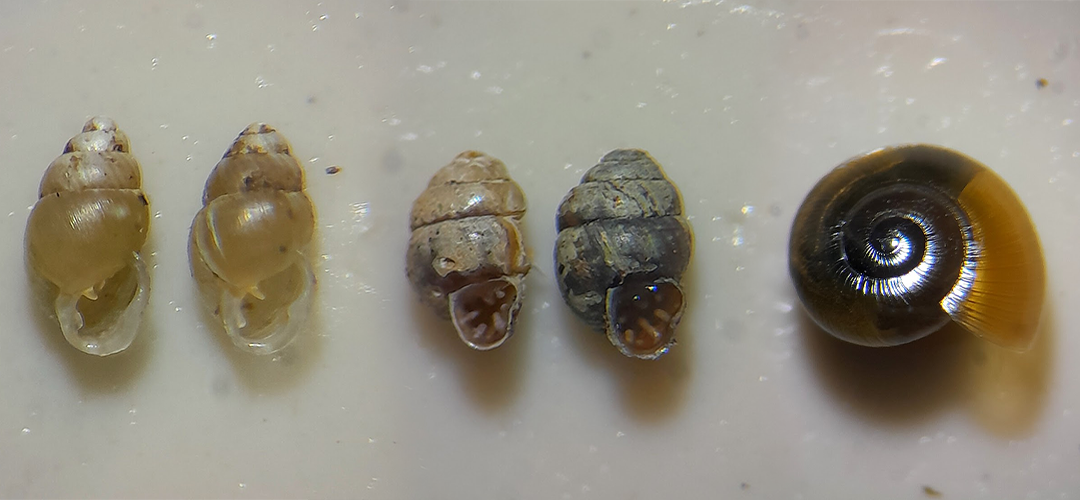
Pictured above (left to right): herald snail Carychium minimum, marsh whorl snail Vertigo antivertigo and rayed glass snail Nesovitrea hammonis, species identification: Clive Walton. CREDIT: Clive Walton
By the end of the day, we’d identified three potential ponds for release. Establishing new populations of pond mud snails is vital for ensuring the species’ long-term survival in Scotland, as there are currently only seven known sites - all of which are fragmented. If the water chemistry results come back clear, we’ll begin planning releases into these ponds this autumn. Stay tuned to hear how it goes!
Laura Daniels, assistant conservation project officer

